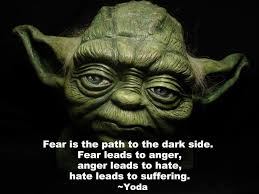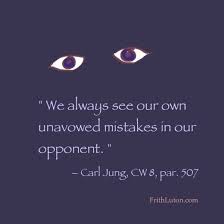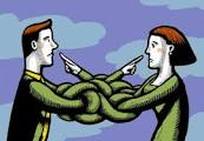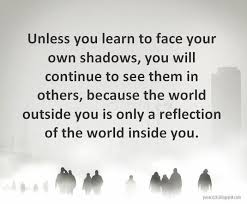This election season is giving all of us ample opportunities to use our spiritual practices to transform fear and anger into energy that  can be used to help one another through compassionate action. I’m using this article to suggest various ways to do that – both for ourselves and with one another.
can be used to help one another through compassionate action. I’m using this article to suggest various ways to do that – both for ourselves and with one another.
I am not trying to be pollyannaish with these suggestions, but to genuinely question and turn ourselves into what Pema Chödrön calls a bodisattva-warrior. I’ll be using a few quotes from her article in the Shambhala Sun (November, 2012) throughout this article.
This is not meant to be an in-depth or in any way thorough rendering. Rather, it is meant to give you some food for thought and deeper exploration on your own.
- #1 — The passion that lives at the core of our anger and fear is our own passion for living. Anger can help us know what we value most. Looking straight into the core of what enrages and terrifies us AND NOT PROJECTING IT OUTWARD can serve to show us our own depths. As we bring awareness and deep contemplation of what is so disturbing to us, our true values are revealed — as is the work we need to do on ourselves to become whole. So, the very first way to transform the state is to REALIZE we can do so. All states of consciousness are energy states bubbling with life force. If we are able to realize this and harness all the anger and fear
 that seems to be generated right now, we can help transform the world. Sometimes what generates fear and anger in us does so very appropriately so that we can have access to even deeper levels of energy. It is not to back away from very strong emotions, but to embrace them, understand them, and transform the energy within them.
that seems to be generated right now, we can help transform the world. Sometimes what generates fear and anger in us does so very appropriately so that we can have access to even deeper levels of energy. It is not to back away from very strong emotions, but to embrace them, understand them, and transform the energy within them.
- #2 — Using the tools of mindfulness and self-awareness, question the very premises upon which your fear and anger resides. There are beliefs that are causing your emotional state to come up. There are also beliefs that go along with your releasing or transforming these states. Take a few moments to ask yourself what you would like to do about all the emotions being generated at this time. What are you getting out of them? Try to look into the face of whichever candidates you like the least and see what you are projecting onto that person. How about on the face of the candidates you like the best? This in no way means that you will not have preferences; it means that you will become more aware — and thus, more effective, not less.
- #3 — Take yourself seriously. The causes of intense emotion within you are something of great value to understand and delve into deeply. Used as fuel for a spiritual practice, they can bring us to the very core of who we are, of what is of greatest importance to us. The full impact and transcendence of these raw materials brings us to what we are really willing to live — and even die — for.
- #4 — Be aware that under fear and anger can be even deeper levels of grief and deeper levels of fear and anger. We seem to operate on many levels at once. However, as you plumb the depths and attempt to dialogue and increase awareness, you grow “experience muscles” which allow you to handle ever-increasing levels of experience — both the negative ones and the deeply joyous ones. These are such times that demand we not turn away from the extremes of experience. We are most certainly living through times of both great achievements and knowledge and wonderful acts of humanity as well as some of the most horrific challenges of all times.
- #5 — In order to begin to transcend these states, make a list of things that help you to be able to handle them. Such things as meditation, walking, drawing, dialogue work and writing are all things that might be on the list. There might also be addictions, like alcohol or over-eating; write it all down. Really look back over your life and see just what has helped you in the past, as well. if you have a strong spiritual practice, write down just what it is about the practice that helps you most. If you do not have one, creating a list of things that have helped you most will assist you in formulating one. It is certainly my belief that having a spiritual practice in place is essential for our future.
- #6 — Especially in dealing with the current political scene, learning to hold what Jungians call the “tension of the opposites” is an extremely valuable tool. To give an example from my own work with people I offer the following: I have seen both Republicans and Democrats during this campaign, and I am particularly struck by the level of fear and anger coming up from people identified with either one of the parties.
 There seems to be so much blame and genuine fear of what will happen if one or the other of the candidates wins this election. I’ve been helping people really dig deeper and see what it is that is under the fear for them, what is it that they believe they will not be able to handle if the “other” candidate wins. Across the board, the fears are dire, that terrible things will happen to our country, our families, and our world. if you find yourself strongly in this camp, take a look at it and realize that you will be most effective if you harness that fear and put it to use, either in backing one or the other candidate, or in helping quell the fears of your friends and family. Even though strong preferences are most certainly held, none of us really knows what this election “means” for the greater unfolding of the world’s journey.
There seems to be so much blame and genuine fear of what will happen if one or the other of the candidates wins this election. I’ve been helping people really dig deeper and see what it is that is under the fear for them, what is it that they believe they will not be able to handle if the “other” candidate wins. Across the board, the fears are dire, that terrible things will happen to our country, our families, and our world. if you find yourself strongly in this camp, take a look at it and realize that you will be most effective if you harness that fear and put it to use, either in backing one or the other candidate, or in helping quell the fears of your friends and family. Even though strong preferences are most certainly held, none of us really knows what this election “means” for the greater unfolding of the world’s journey. Our willingness to hold that tension of opposites may serve in the face of the not-knowing. Holding the tension allows something else to arise in between the two, a third, often unexpected “something.” Try to access empathy and compassion for the “other side.” They are people with the same needs, fears and abilities as we have. Pema says, “Compassion is threatening to the ego. We might think of it as something warm and soothing, but actually it’s very raw. When we set out to support other beings, when we go so far as to stand in their shoes, when we aspire to never close down to anyone, we quickly find ourselves in the uncomfortable territory of ‘life not on my terms.’ The commitment traditionally known as the bodhisattva vow, or warrior vow, challenges us to dive into these noncozy waters and swim out beyond our comfort zone.”
- #7 — The most important practice we can have (to me) is that of the Buddhist practice of tonglen — the practice of compassionate giving of energy. Here is a link to a website for more information: http://pemachodronfoundation.org. This will help you understand it if you want further instruction. Pema Chödrön has described it and taught it so beautifully that I am simply going to give you a little hint of it and you can find more through her.
The practice for me has come to be the cornerstone of my own personal work with people. To help them learn first to identify and explore their pain very deeply, and then not only to transcend it, but also to use it as a spiritual practice to help others in their life who are suffering. The essence is to breathe in the suffering of others, and as you do so, transform it into compassion and empathy and send it back out to others on the out-breath. If you have trouble “getting this,” this, try this: first imagine someone you love deeply and unconditionally. Notice the places in their life where they are suffering. Imagine taking in that suffering, transforming it to love within you and sending it back out to them. Then with someone you do not love quite as much, and on and on, until you come to those who you do not like much, then those you dislike a great deal, then those you hate/fear. Just make notes in a journal about your various reactions.
Pema says this, “Chogyam Trungpa once said, ‘The problem with most people is that they are always trying to give out the bad and take in the good. That has been the problem of society in general and the world altogether.’ The time has come for us to try the opposite approach: to take in the bad and give out the good. Compassion is not a matter of pity or the strong helping the weak; it’s a relationship between equals, one of mutual support. Practicing tonglen, we come to realize that other people’s welfare is just as important as our own. In helping them, we help ourselves. In helping ourselves, we help the world.”
- #8 — Another practice we can put into our daily lives is that of simply offering our strongest, most difficult emotions to the Holy Spirit, Higher Self, or directly to God/Goddess/Absolute, and ask for guidance to be shown the way through to the highest and best within us. This can be done with the highest sense of humility we have because we simply do not have the answers and are unable, on our own, to function without that guidance. An extension of this practice can be to identify as completely as possible with an enlightened being such as Jesus Christ, Padmasambava, Buddha, Quan Yin/Tara, Mohammad, or other great Masters. Really take time daily to see with this Being’s eyes, hear with His ears, touch with Her hands, love with Her heart, and transcend with His commitment.
- #9 — The last point I am going to offer here is simply a suggestion for a ritual to be developed and performed in your own way. Create a simple ritual where, with the aid of a candle and incense, if it fits for you, write down the strong emotions, relationships and parts of yourself, and the world, that you would like to see transformed into a “bodhisattva-warrior” stance of compassion for others and yourself, and service to the world. Burn that piece of paper as a symbolic act of transformation and offer that prayer to the healing of yourself and the world. One more quote from Pema Chödrön can help with this suggestion, “It’s said that when we make this commitment, it sows a seed deep in our unconscious, deep in our mind and heart, that never goes away. This seed is a catalyst that jump-starts our inherent capacity for love and compassion, for empathy, for seeing the sameness of us all. So we make the commitment, we sow the seed, then do our best never to harden our heart or close our mind to anyone.”
